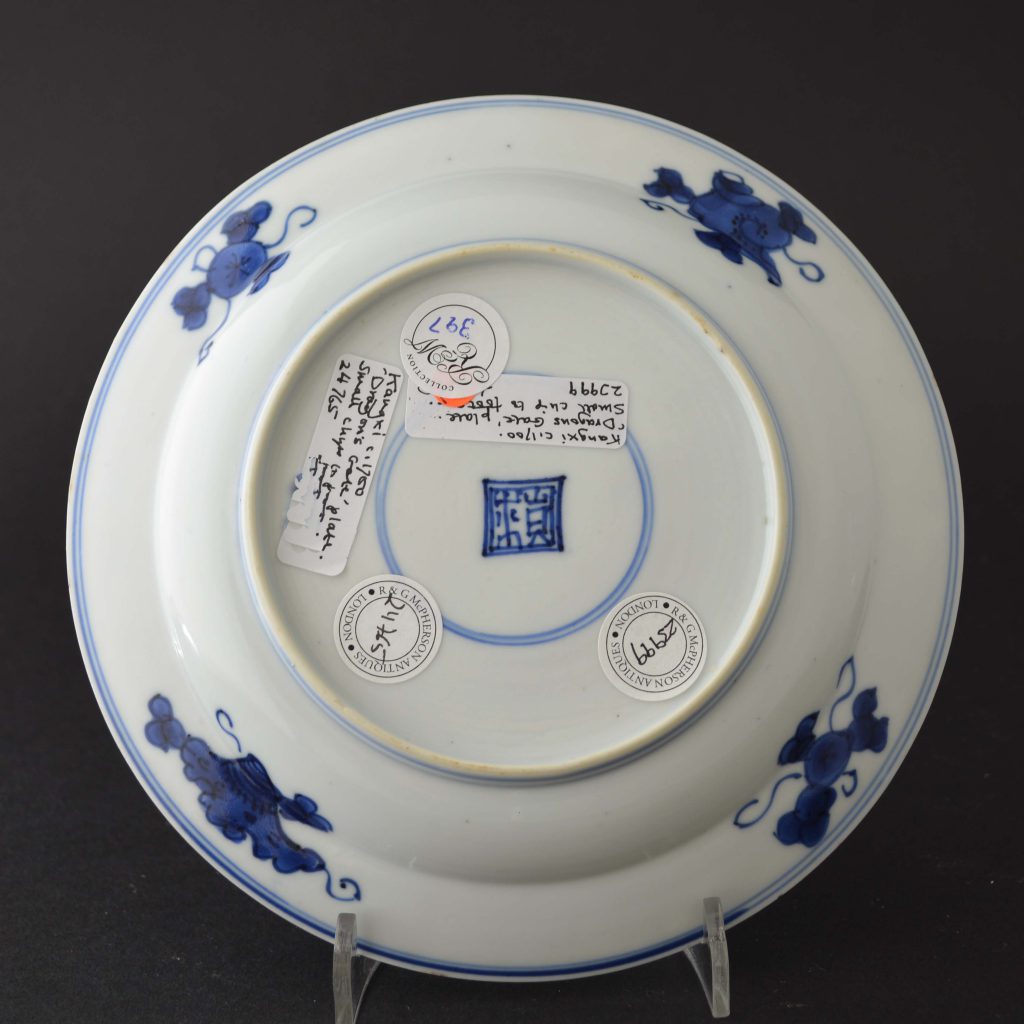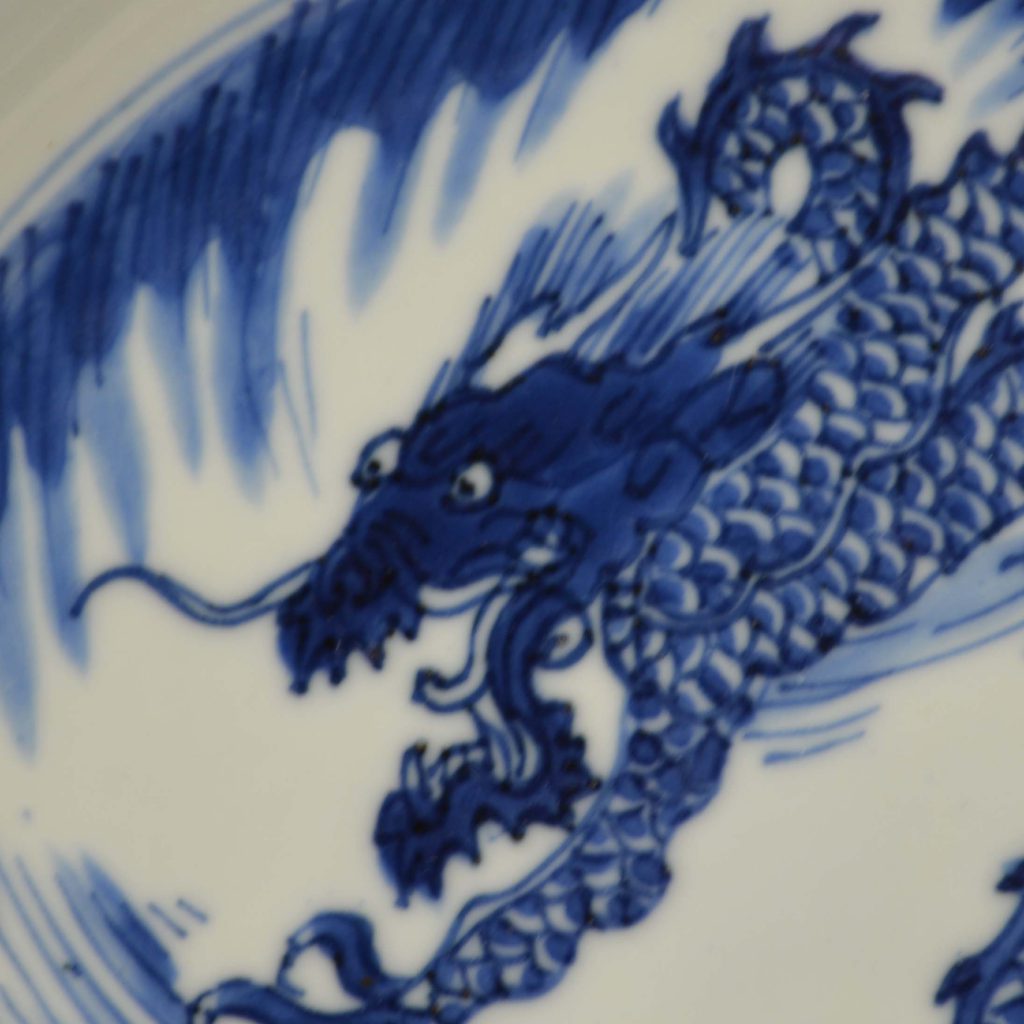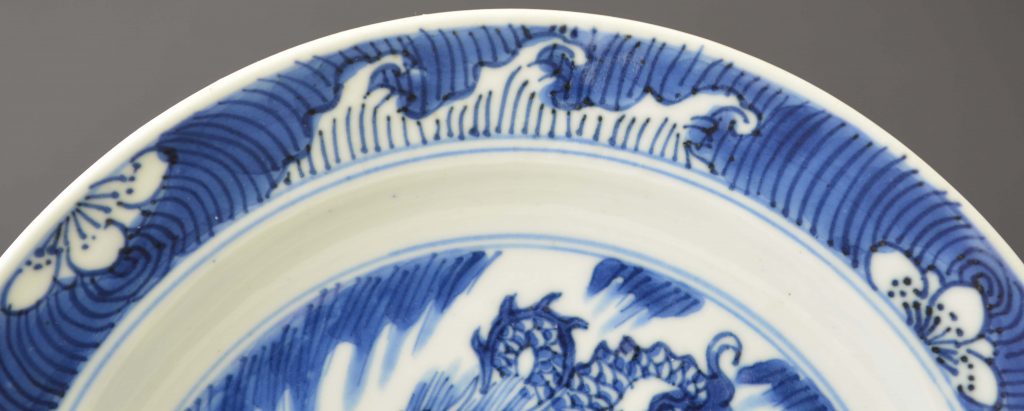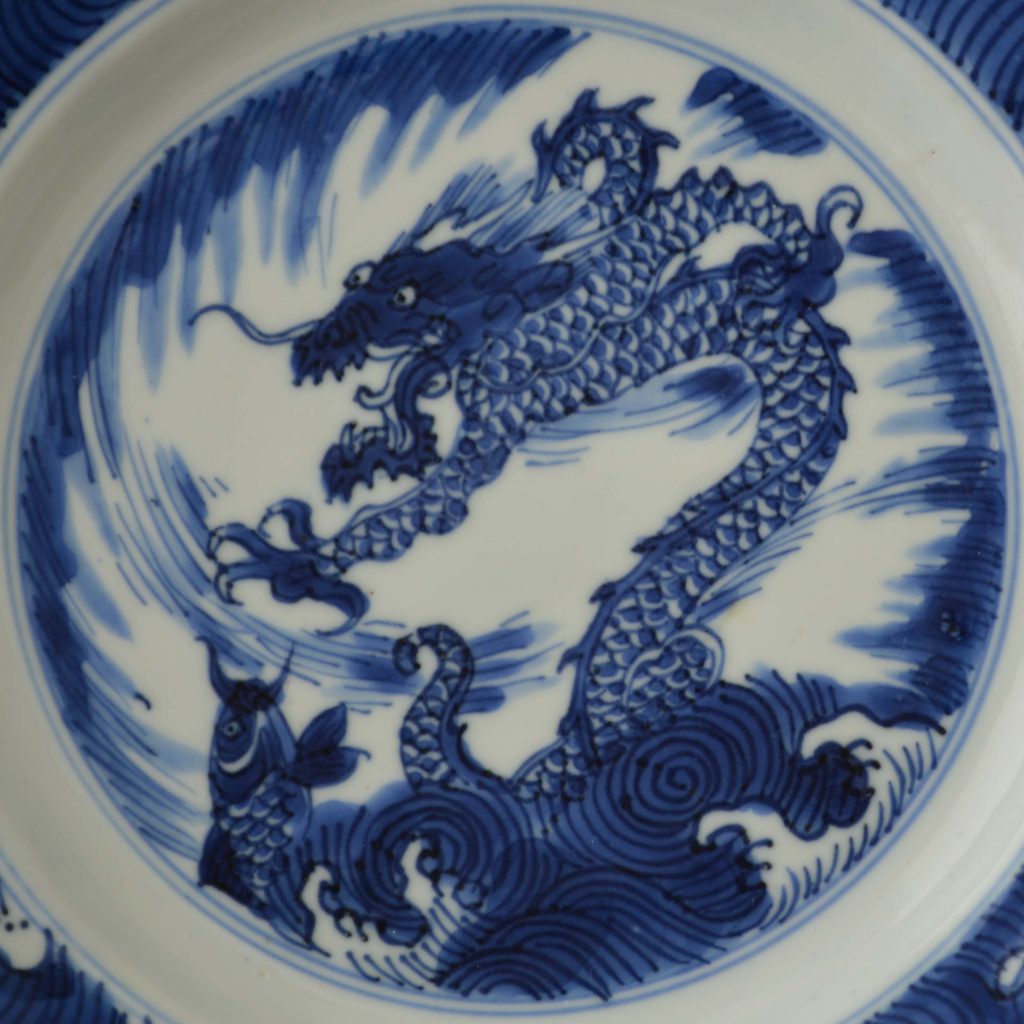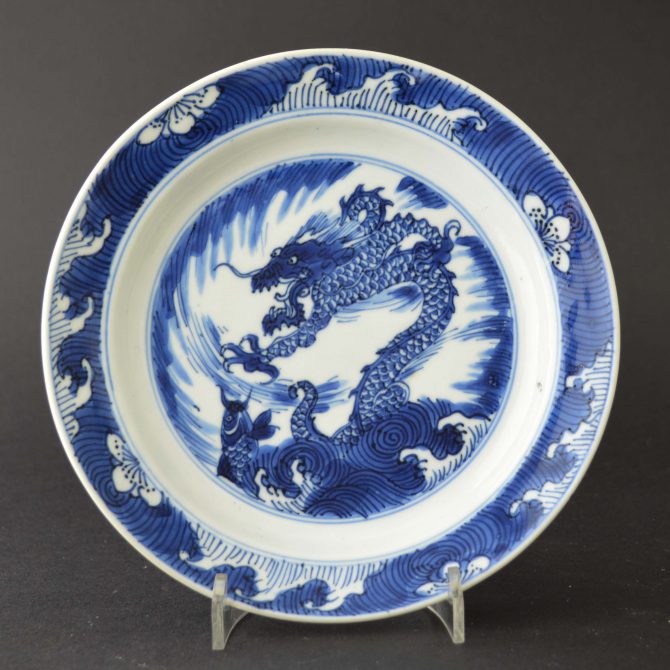
A Kangxi Blue and White Porcelain Dish Decorated with a Dragon and Carp c.1700
A small Kangxi Blue and White porcelain plate c.1700. Painted in strong tones of cobalt blue with a ferocious dragon raising it`s self from a turbulent sea, it`s mouth open and extending a scaly clawed arm towards a carp that is attempting to leaping above the waters surface. The dramatic scene is enclosed by a large waves. The rim is decorated with swirling waters, with half prunus flower-heads and crashing waves. The back has a Shop type seal-mark.
SOLD
- Condition
- A small chip, mostly glaze, inside the footrim c.5 x 4 mm.
- Size
- 16 cm (6 1/4 inches)
- Provenance
- R and G McPherson Antiques, A Private English Collection of Chinese and Japanese Porcelain.
- Stock number
- 24765
Information
Dragon Gate :
The leaping carp together with a dragon was used as to wish luck in Imperial examinations. The carp struggles, swimming up-stream, eventually reaching it`s goal of passing through the Dragon Gate.
Dragon :
The Dragon is synonymous with China, it permeates every part of Chinese culture from popular folklore, art, religion to the emperor of China himself. Dragons have been depicted since earliest times. The Dragon, although strong, is in China a benevolent, even positive beast, potent with auspicious powers said to control the Earth and the Heavens. It is associated with life giving rain that nourish crops. This connection with rain and indeed all forms of water could be due to some folklores that says the Dragon is based on the now extinct salt-water crocodile that used to inhabit the rivers of China. The earliest depictions of Dragons in China are so far recorded as being from the Yangshao culture in Henan in the fifth millennium BC from. The five-claw Dragon is reserved as a symbol of the Emperor.
